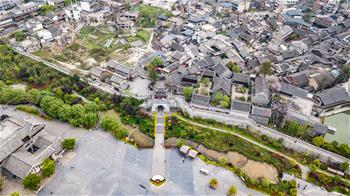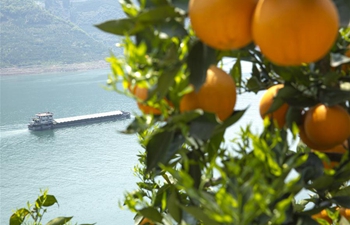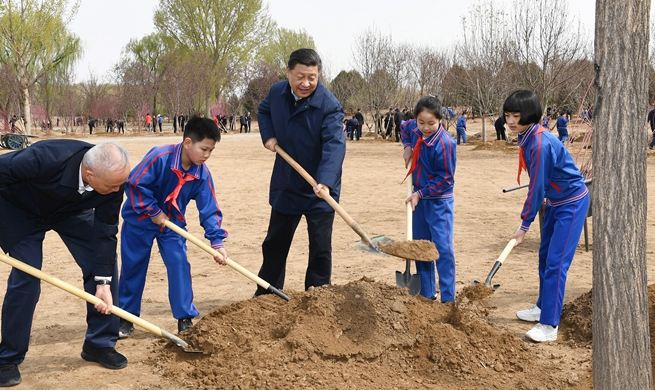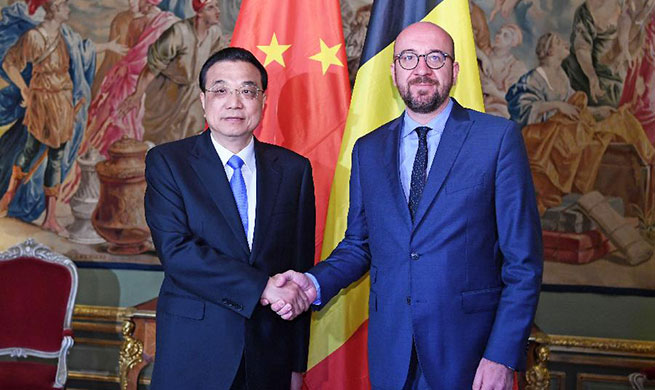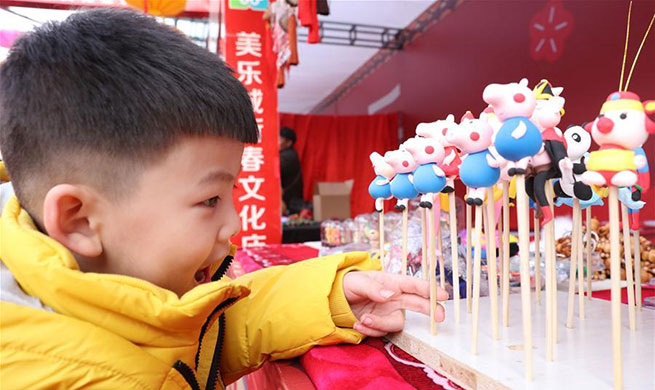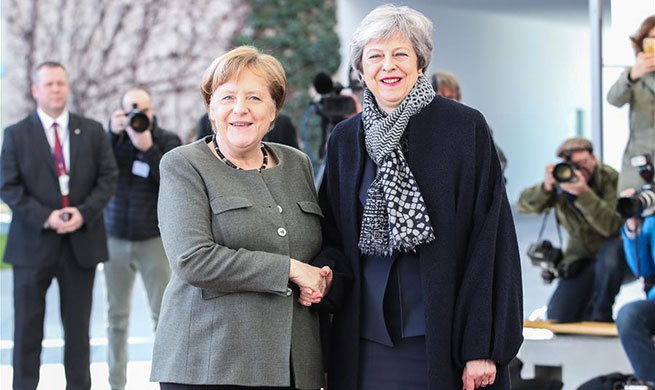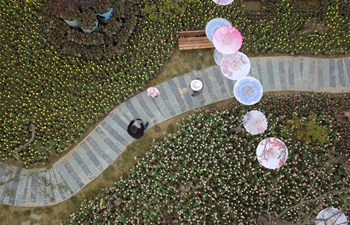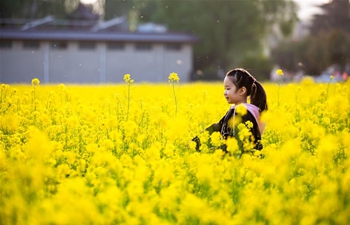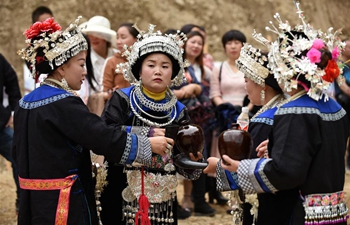By Alessandra Cardone
VERONA, Italy, April 9 (Xinhua) -- A general upbeat sentiment was palpable among Italian winemakers at the ongoing Vinitaly fair here in the country's northeast as domestic consumption resumed in value last year and sales abroad increasingly satisfying.
Experts also saw Italy's wine industry in good health and quite ready for the inherent challenges of the next few years, which will require them to boost their appeal on emerging foreign markets, among other steps.
With this in mind, the Veronafiere organizer is increasingly looking to the Far East.
"What we are registering so far is a very positive sentiment among winemakers here," Veronafiere Director General Giovanni Mantovani told Xinhua.
According to Veronafiere, some 4,600 exhibitors with about 16,000 wine labels are taking part in the 53rd edition of Vinitaly, the best ever result for the country's largest wine event.
Mantovani added that they also expect a rise in the number of foreign buyers, which may exceed the 35,000 registered in the previous edition, to prove that good choices in terms of promotion and education made in the last years, coupled with a large network of partnerships is proving successful.
The organizing company is not determined to open "a permanent operational fair structure in China", after being present in the Chinese market with Vinitaly-related activities for 10 years.
"We are working on creating a company controlled by Veronafiere, but operating in partnership with a Chinese partner that is much experienced in the wine and food sector, and therefore strategically crucial for us," Mantovani announced.
The reason behind this choice was clear. The Far East imported wine for 6.45 billion euros in 2018, only inches behind the 6.9 billion euros imported by North America (the United States and Canada), according to Vinitaly and Nomisma Wine Monitor.
And China was set to become the world's second largest wine consuming market by 2021, behind the United States and before Britain and France, a 2017 study by the International Wine & Spirit Research (IWSR) forecasted.
Italy still lagged behind in this perspective, ranking only fourth on the list of major wine exporters to China, after France, Chile, and Australia.
Yet, the Italian production was large, rich and varied, said domestic experts, and potentially capable to improve.
In 2018, the country registered a wine production of 50.4 million hectolitres, and the wines granted the highest classifications of origin (DOGC and DOC) exceeded the record quantity of 20 million hectolitres, preliminary data by the National Institute of Statistics (ISTAT) showed.
Sales abroad also showed an upward trend in 2018: a 3.3 percent annual increase in value to 6.14 billion euros (6.9 billion U.S. dollars), according to custom data analysed by Vinitaly-Nomisma Wine Monitor.
Furthermore, a recent survey by Italian investment bank Mediobanca's Study Center showed the turnover of Italy's 166 largest wineries rose by an annual average of 7.5 percent last year, and registered "a moderate optimism for the 2019," with 82.6 percent of firms involved expecting their sales not to decrease.
Analysts agreed on both the positive outlook for Italy's wine industry overall and the growingly crucial role of the Asian market.
"The prospects are quite good. Besides the 3.3 percent increase in exports last year, the domestic market has also grown in terms of value of the bottles purchased, and this allows us to be moderately optimistic," Denis Pantini, head of Nomisma Wine Monitor, told Xinhua.
"Although it is still too early for a 2019-2020 growth forecast, some crucial markets that slowed down in 2018 - such as United States and China - are expected to return to a considerable positive path," he added.
In the pavilion of the Lombardy region, which hosts about 200 exhibitors representing some 80 percent of all wineries in the area, Andrea Giorgi appeared confident in the growth prospects of the Terre D'Oltrepo winery, in which he served as president.
"This Vinitaly is confirming that the choice we have made to invest in the 'Metodo Classico' for sparkling wines from Oltrepo Pavese (area) has a strong potential," Giorgi told Xinhua.
With a turnover of about 40 million euros, the winery was rooted in the hills of northwest Oltrepo Pavese, which represented some 75 percent of the Italian production of Pinot Noir, and was renown as well for some local grapes such as Muscat, Croatina, and Barbera.
"We have also revamped the Testarossa from La Versa as one of the big brand of the Italian sparkling wines, and we are having a strong feedback so far," explained the manager, who said his expectations for the 2019 were "prudent, but optimistic."
"We can count on a great territory and a great quality of production, and it is up to us to valorise it, and to make it better known on the domestic market and, most of all, on foreign ones," he said.
Moving to the pavilion of northwest Piedmont, one of Italy's most important wine growing regions especially for red wines, expectations also seemed high.
Piedmont has historic wineries producing famous Barolo and Barbaresco wines made of Nebbiolo, one of the most prestigious grapes in the country.
Younger generations were taking the lead in many companies, following the region's strong traditions.
"The 2018 has been a very good year, and the 2019 is going even better," said Roberto Dragani, production manager of the Vinum winery.
"We have registered an annual increase of about 30 percent in turnover in recent years, so we are indeed happy," said Dragani, whose relatively small family winery was based in the town of Ortona, central Abruzzo region, but produced also in Piedmont and Tuscany.
Dragani, 33, represented the third generation of winemakers in his family. He explained that their production was focused on exports, which made 90-95 percent of their turnover.
"So far, our foreign markets of reference have been Europe and the United States, but our future goal is Asia, where the middle class is growing, and the number of wine consumers is on the rise," he noted.
And Asia, for the young manager, meant China.
"For about two years, we have been exporting to China, and only there... because China is where we are planning to expand, in order to make it our new foreign market of reference."




